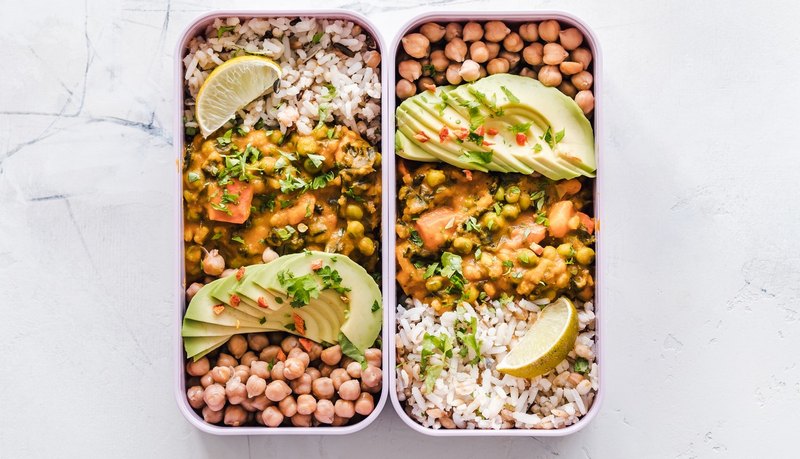Rice and beans are one of those foods eaten by almost everyone and I am sure you would have at one point or another wondered whether or not you can freeze them so that you can reheat them later. Generally, this is a very nutritional meal and yet very simple combinations. Because it is a very popular meal, people usually ask the question of if it is possible to freeze it or not.
Rice and beans can be frozen and you as a very busy person can save yourself some time as well as money by cooking in your meal ahead of time and then freeze and reheat them instead of preparing them fresh every time. Even though it is quite straightforward to freeze rice and beans, I have deemed it fit to show you how you can easily do it so that you can ensure your meal will be delicious once you are done.
What is contained in this guide to first check the general information that you should consider when you want to freeze your rice and beans and then the simple detailed steps you should follow on what you need to do during the process of freezing. You will also get to see the best ways you can use to reheat them.
Freezing Rice and Beans: Step by Step Guide
Things you should consider – Freezing Rice and Beans
You need to put some certain things into consideration before you try to freeze your meal. The first thing is that you have to understand that you should properly seal the meal before you freeze and this is the most considered important factor. It is a very important step because failure to do so will most probably lead to freezer burn. You need to either get large double-sealed freezer bags of high quality or some airtight freezable containers.
Freezer burn usually happens when the food you are freezing loses some of its moisture to oxidation and dehydration. This happens because water molecules contained within your food will move slowly to the coldest part of the freezer and will eventually escape from the food. Freezing cooked rice and beans will be more prone for freezer burn to occur than for the raw variety because the process of cooking would have already removed some of the moistures.
You should be aware that foods that have undergone freezer burn can still be eaten but only that the taste would have been a little lost and it will most probably taste drier, leading them to be flavorless and blander. Check below for some of the ways you can prevent your food from being susceptible to freeze burn:
- You can keep the temperature of the freezer stable when you fill plastic containers with water and place it in the freezer.
- Do not ever leave the door of your freezer open for a long time.
- You should always ensure that the food is completely cooled to the temperature of the room before you place it inside your freezer. Placing your food while being hot will cause a change in temperature within the freezer and will increase the chance of freezer burn.
- Ensure you allow the freezer to remain at a temperature of 0°F because a fluctuation of temperature will increase the chance of the food getting freezer burn.
- You must not freeze your rice and beans for too long because the longer you leave them inside the freezer, the higher the chances of freezer burn.
- Ensure the meal is tightly wrapped and sealed. All you need to achieve this is to double wrap the food into vacuum sealer bags or sealable Ziploc bags and ensuring you press the bag as tightly as possible against your food so that it will prevent molecules of water from being eliminated from the food. To work conveniently, you are preferred to use a vacuum packaging or an airtight container and ensure you fill the food up.
In as much as the highlighted six guidelines are followed, your food will not develop anything like freezer burn.
The process of freezing will not drastically alter the composition or taste of the beans, but it does affect your rice in that it will lead to the clumping together of your rice and it will later become mushy. This may not necessarily ruin or alter the taste associated with your rice, but the texture that has become mushy might not be good enough for almost all people.
After you have stored your rice inside the freezer, the best method to prevent it from being mushy is to break up the rice into smaller pieces. You will do this when you freeze several small one or two cups instead of a giant batch. Some of them become mushy but the chances that most of them might be mushy are very slim and it means you will better risk only a few being mushy than most of your rice.
Another method you can use to prevent the rice from being mushy will be to avoid it from slow-thawing at room temperature or inside the fridge after you have frozen because there is a tendency for the rice to turn mushy when you thaw them. So, at last, you now have the basic details about how you can freeze your rice and beans, we can now move fully to check out the simple step guide you need to follow.
Freezing Rice and Beans: You should follow the steps below
Step 1: Prepare and cook your meal in batch.
Note: You must be aware that these steps we will talk about here can be applied to any rice and beans variety and that means you don’t need to put your worries on a specific kind that has been prepared for you.
Step 2: Always remember you need to allow your meal to cool to room temperature. You can speed up your process of cooling by evenly laying the rice out on your baking tray. Hold your rice under water that is running before you add it to the beans so that it will not stick to your baking tray. Your rice should cool down within 30 minutes.
Note: You may also allow your meal to cool inside your fridge if you want the process of cooling to become sped up. It is a fine thing if you allow them to be at a colder temperature than that of the room before you place them inside your freezer to freeze.
Step 3: You should proceed by dividing your meal into one to two cups depending on the quantity of rice that you have. This will help you to prevent freezer burn and will also give you a chance to precisely reheat the quantity you need when you want to eat them.
Step 4: Put the divided portions into an air-tight sealable bag which could be freezer bags, Ziploc bags, or vacuum sealer bags. Once you place the meal inside the bags, allow it to flatten out and make the layer even and thin so that the process of reheating will be more effective if you decide to use your microwave to reheat because it will make the heat evenly distributed easily.
Note: This may not be required, but it is not out of place to the bags with the food’s name, the quantity you have placed inside, and also the date of freezing. This is required because when you want to reheat your meal, you will be aware of how much that is left and the exact period at which they have been kept in the freezer.
Step 5: Put the bags containing your meal inside your freezer to get them frozen.

Reheating Rice and Beans
Reheating your meals will be an easy thing to do if you have properly followed the outlined steps concerning the process of freezing. Always remember not to slow-thaw the meal at room temperature, inside the fridge, or inside cold water because it will allow them to turn mushy and might ruin the food.
The best way you can use to reheat your rice and beans is to do it inside your frying pan by adding a few tablespoons of water on the stovetop under low heat and you have to slowly break and stir the meal as time progresses.
For a faster-reheating process, put your meal inside a microwave by pouring a little water so that it will prevent moisture loss and then you should allow it to microwave in the increments of one minute stirring the meal as you observe it.
Related Questions
Is the Process of Freezing of Rice and Beans prepared with Other Ingredients the Same?
The process of freezing is the same even if you have combined them with some other ingredients, just follow our outlined process of freezing.
Can you Re-freeze Rice and Beans After it has Been Reheated?
It is possible to refreeze your meal after you have reheated it, ensure that you follow our outlined freezing process when you want to refreeze so that you will get the best of results.


